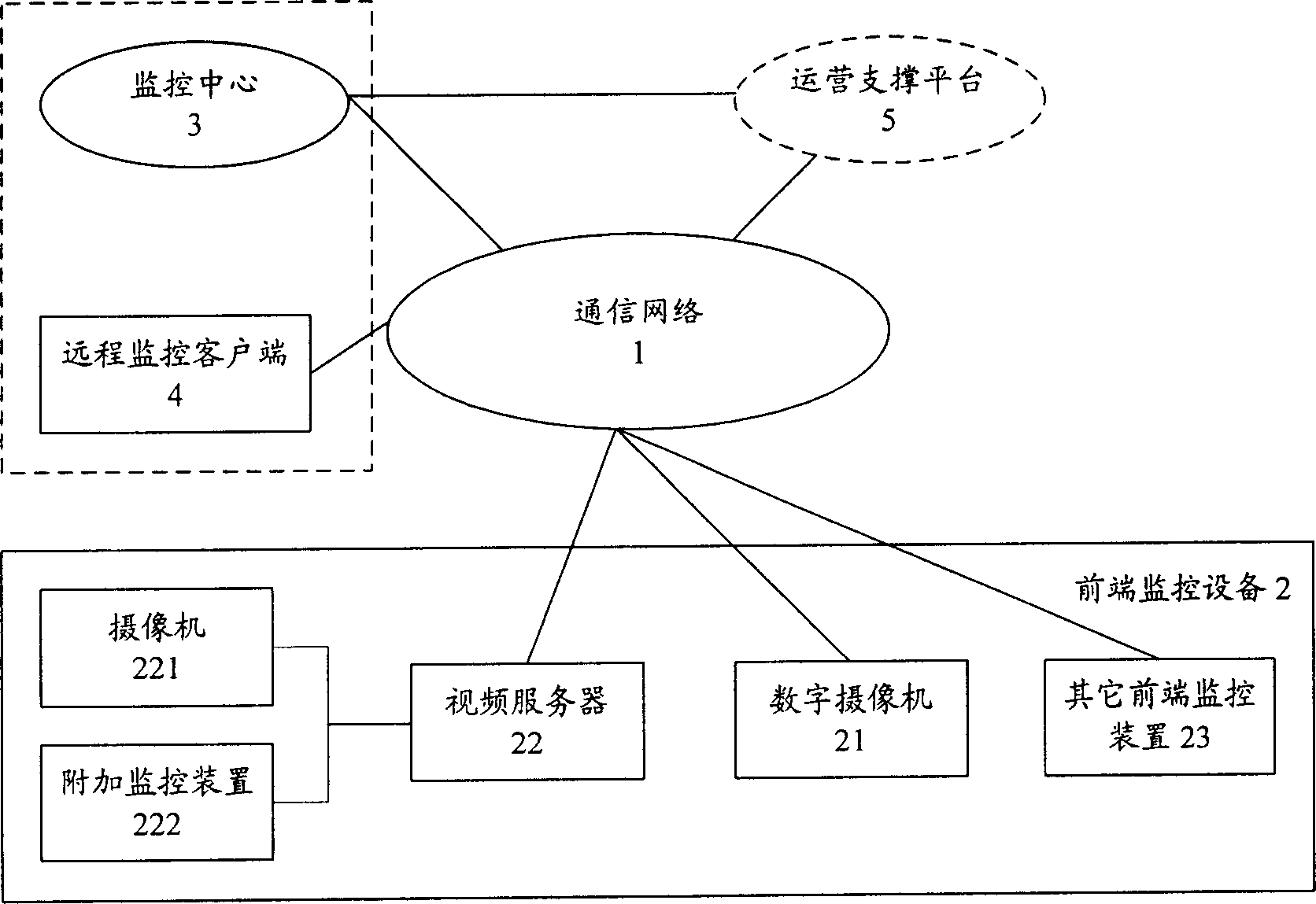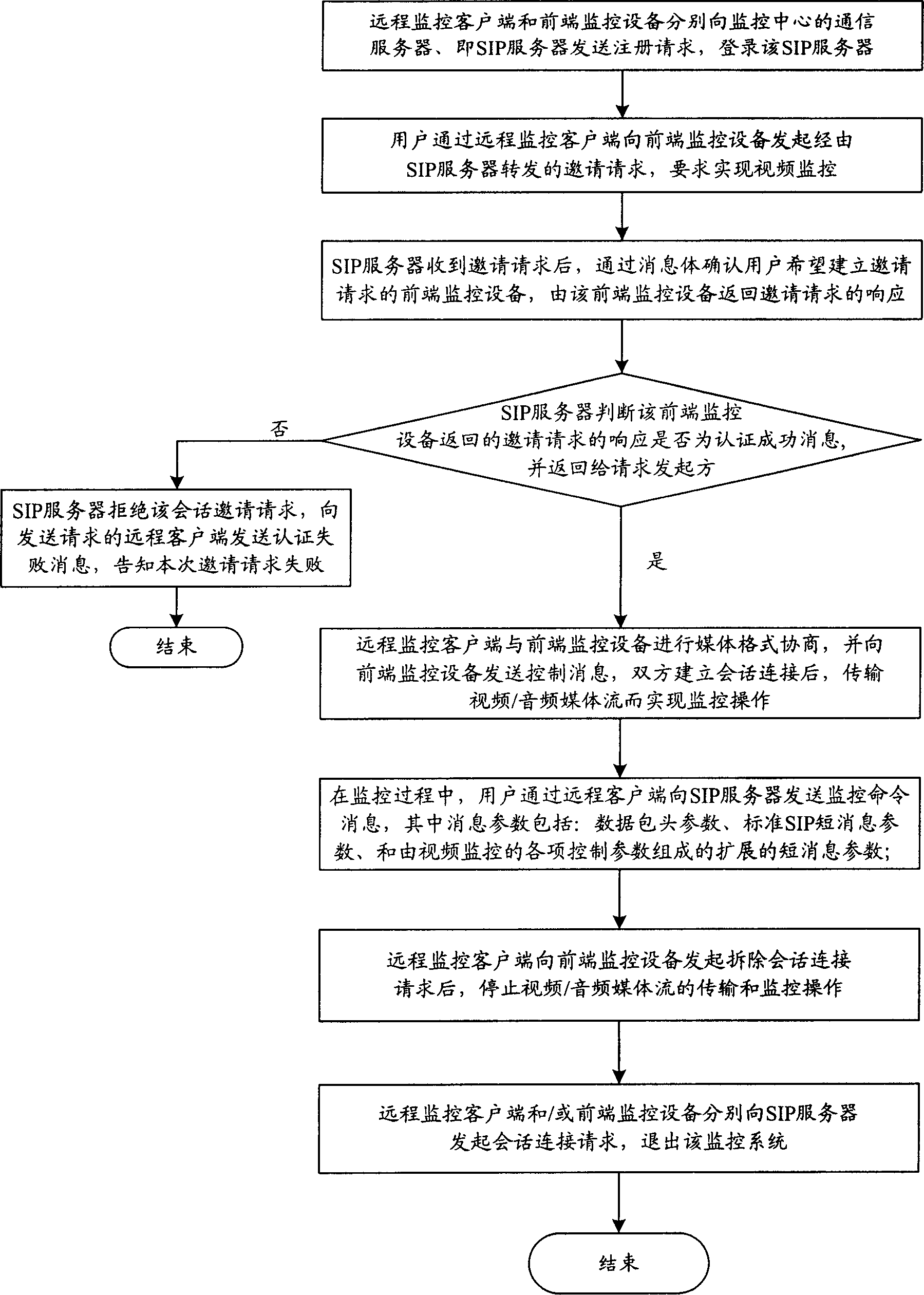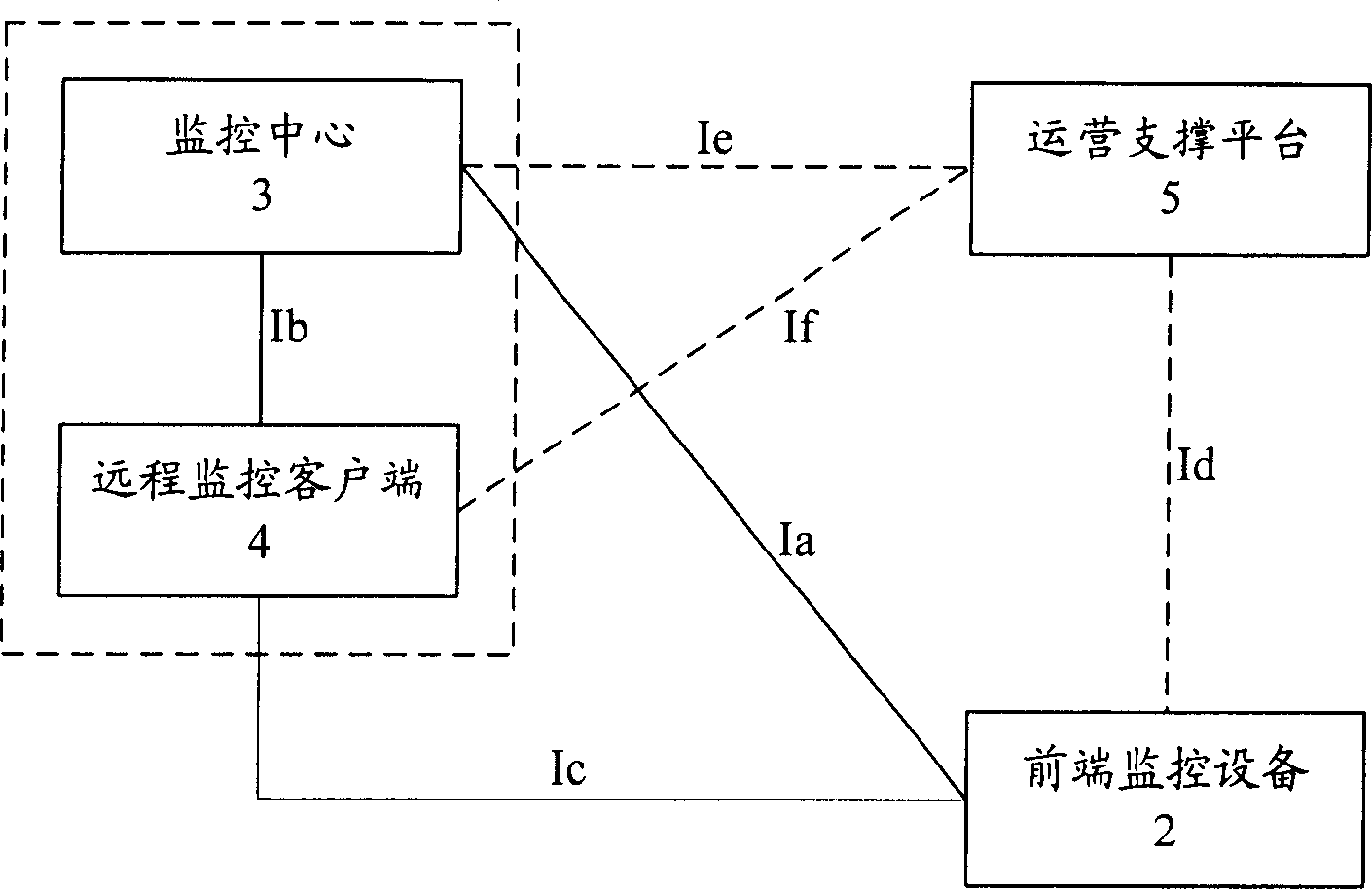Remote video monitoring system based on session initialize protocol and its implementing method
A technology for initializing protocols and monitoring systems, applied in transmission systems, electrical components, etc., can solve problems such as SIP application systems and implementation methods that are not involved, eliminate bottlenecks in network scale expansion, ensure service quality, and enhance system scalability. Effect
- Summary
- Abstract
- Description
- Claims
- Application Information
AI Technical Summary
Problems solved by technology
Method used
Image
Examples
Embodiment approach
[0088] In order to build a large-scale remote video monitoring system, like other public telecommunication networks, the system of the present invention is also hierarchically networked according to the monitored area and business needs, that is, a multi-level monitoring center architecture is adopted. Among them, the regional monitoring sub-center, as a control platform for monitoring and managing multiple monitoring sites within the jurisdiction of the region, needs to report the monitoring status to its superior monitoring center, and the superior monitoring center conducts business summary and certification for its subordinate sub-centers and management. In order to realize the operation and unified management of the nationwide remote video surveillance business, it is necessary to carry out hierarchical networking of the surveillance business system, Figure 4 It shows the three-level organizational structure of the business operation system: national monitoring center, r...
PUM
 Login to View More
Login to View More Abstract
Description
Claims
Application Information
 Login to View More
Login to View More - R&D
- Intellectual Property
- Life Sciences
- Materials
- Tech Scout
- Unparalleled Data Quality
- Higher Quality Content
- 60% Fewer Hallucinations
Browse by: Latest US Patents, China's latest patents, Technical Efficacy Thesaurus, Application Domain, Technology Topic, Popular Technical Reports.
© 2025 PatSnap. All rights reserved.Legal|Privacy policy|Modern Slavery Act Transparency Statement|Sitemap|About US| Contact US: help@patsnap.com



